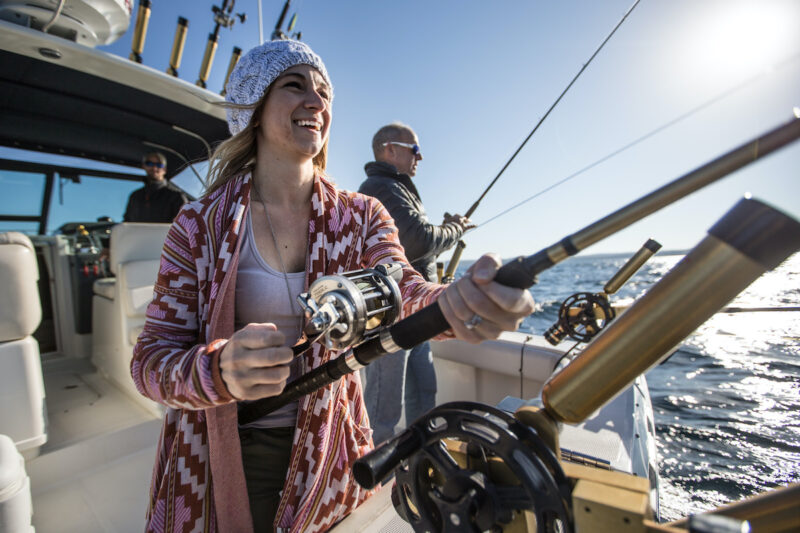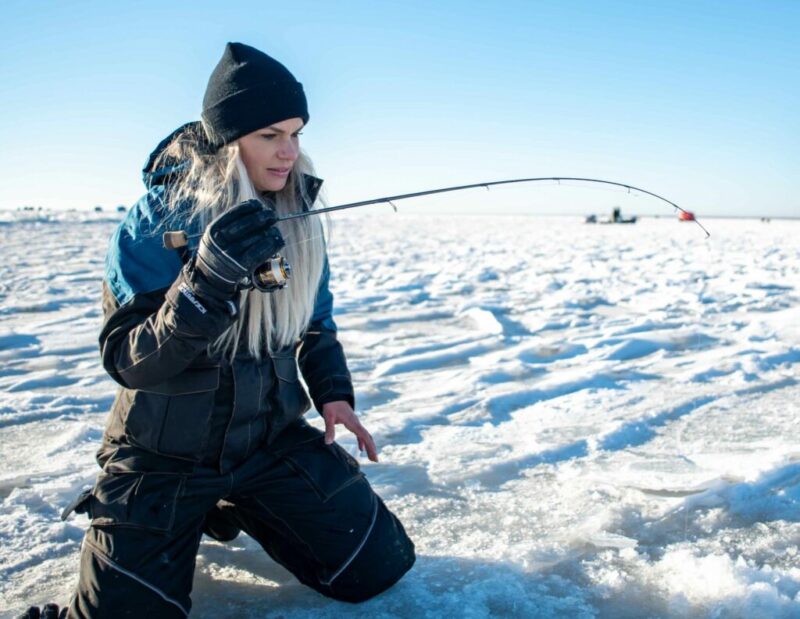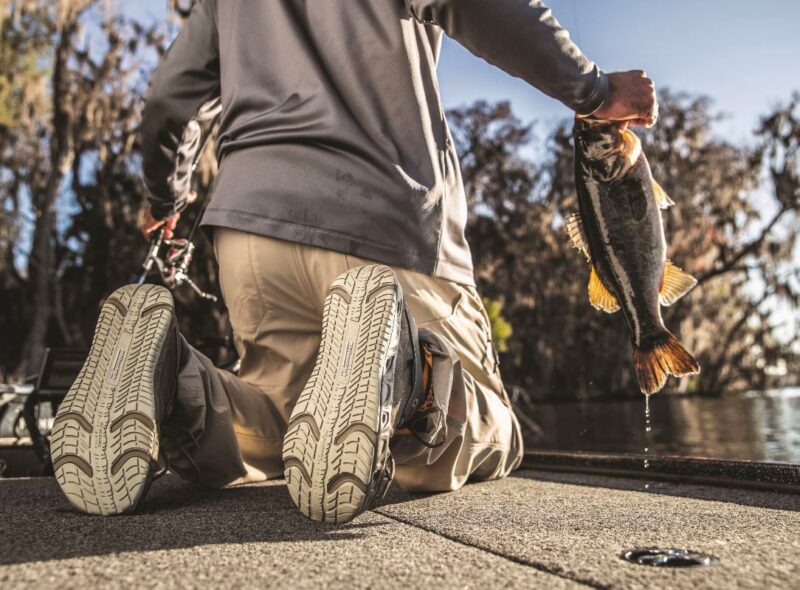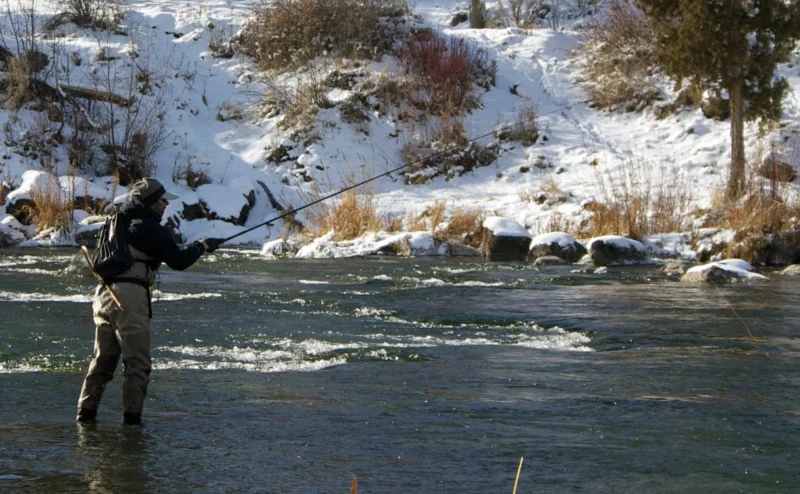Winter fishing is a whole different ballgame. When temperatures drop, the water gets icy, and the wind starts to bite, staying warm and dry becomes just as crucial as having the right rod and reel.
Getting your gear right can mean the difference between a cozy, enjoyable day on the ice or by the river — and a miserable, teeth-chattering one.
So, let’s talk about what to wear for cold, wet, and downright freezing conditions to keep yourself comfortable, safe, and focused on the catch.
Layering Up

Anyone who spends time outdoors in winter knows that layering is everything. Proper layering traps warmth and lets you adjust your temperature easily without sweating, which is essential in freezing conditions.
Layering up with high-quality, moisture-wicking base layers and insulated jackets is essential to staying comfortable in freezing conditions; for top picks and reliable gear, check out https://www.flopindustries.com/.
1. Base Layer
The base layer is the first line of defense against the cold. It sits closest to your skin and should wick away moisture to keep you dry. When choosing a base layer, avoid cotton, which holds moisture and will leave you feeling clammy and cold. Instead, go for:
- Merino wool: Soft, naturally insulating, and moisture-wicking.
- Synthetic materials: Options like polyester or blends designed for high-performance outdoor activities.
Look for a snug but comfortable fit, allowing you to move easily. And remember, the base layer’s job is to keep sweat off your skin — a crucial step to staying warm.
2. Mid-Layer

Your mid-layer is all about trapping the warmth your body generates. This layer creates a buffer against the cold and can vary depending on just how chilly it is outside. A few solid options:
- Fleece jackets or sweaters: Lightweight, breathable, and effective at holding heat without adding bulk.
- Down or synthetic insulated jackets: Great for colder days, offering top-tier warmth without weighing you down.
Consider the activity level. If you’re moving around a lot (say, walking between fishing spots), you might want a lighter mid-layer to avoid overheating. But if you’re ice fishing and staying relatively stationary, a thicker, insulated layer can make all the difference.
3. Outer Layer
The outer layer is your shield against the elements. It needs to repel water, block the wind, and allow moisture to escape from within. Look for jackets and pants with the following:
- Waterproofing: Gore-Tex or similar breathable waterproof materials work wonders in wet, icy conditions.
- Windproofing: Cold winds can cut right through your layers if they’re not protected.
- Adjustable features: Hoods, cuffs, and zippers let you customize the fit and ventilation.
Remember, an outer layer should be roomy enough to fit over your base and mid-layers without restricting movement.
Footwear

Cold feet are one of the quickest ways to cut a fishing trip short. Trust me, having the right footwear for winter fishing is crucial.
Insulated Boots
For winter fishing, you’ll want boots that are both waterproof and insulated. Look for:
- Thick insulation: Ideally rated for sub-zero temperatures, often marked with grams of insulation (like 400g or 800g Thinsulate).
- Waterproofing: Prevents snow and slush from soaking through.
- High-cut: Keeps snow and ice from sneaking in, particularly if you’re trekking through deeper snow.
Wool Socks
Layering socks is also important. Start with a lightweight moisture-wicking sock, then add a thick, insulated wool sock on top. Wool naturally insulates even when damp, so it’s perfect for keeping toes warm and dry.
Gaiters
If you’re out in deep snow, consider gaiters. These wrap around your boots and the lower part of your pants, blocking out snow and adding an extra layer of warmth.
Headwear

We lose a lot of heat through our heads, so a good hat is essential. But there’s more to it than just grabbing any old beanie.
- Merino wool or fleece hats: Insulate well and are comfortable for long hours.
- Balaclavas or face masks: Protect your face from biting winds and are especially helpful in open, exposed areas.
- Hooded jackets: If your jacket has a hood, it adds an extra layer of warmth and protection from snow and wind.
Sunglasses or Goggles
The sun reflecting off snow and ice can be brutal on the eyes. Polarized sunglasses or goggles with UV protection reduce glare and keep your eyes comfortable.
Handwear
Fishing in winter is a lot harder when you can’t feel your fingers! Gloves that balance warmth and dexterity are a must. Here’s what works best for me:
1. Glove Liners
A thin liner glove, ideally made from a moisture-wicking material like merino wool or synthetic fibers, can be worn under a heavier glove. They provide warmth even when you need to briefly remove the outer glove.
2. Insulated Fishing Gloves
Look for waterproof gloves with enough insulation to keep hands warm but still flexible enough for tying knots or handling fish.
Mittens are warmer, but fishing gloves with fingers and a fold-over mitten design let you maintain some dexterity without sacrificing warmth.
3. Hand Warmers
For those seriously cold days, throw some hand warmers into your pockets or gloves. They can be a lifesaver when temperatures really drop.
Additional Accessories for Extra Comfort

While the essentials above cover most bases, a few additional accessories can boost comfort and keep you out on the water longer.
Heated Gear
Battery-powered heated vests, socks, and gloves have become increasingly popular. These add an extra layer of warmth and can be adjusted to keep you at just the right temperature.
Waterproof Bag or Dry Bag
With winter fishing, you want to keep spare clothing and gear dry. A waterproof bag ensures that your essentials stay protected from snow, slush, and accidental dips in the water.
Padded Seat or Mat
If you’re ice fishing, a padded seat or insulated mat can make sitting on a cold surface a lot more bearable. There’s nothing like being able to sit comfortably without freezing through your pants.
Putting It All Together
A quick recap of the must-haves:
- Base Layer: Moisture-wicking merino wool or synthetic layer
- Mid-Layer: Fleece or insulated jacket
- Outer Layer: Waterproof, windproof jacket and pants
- Boots: Waterproof, insulated boots rated for sub-zero temperatures
- Socks: Lightweight wicking layer + thick wool sock
- Hat: Merino wool or fleece
- Gloves: Liner gloves + insulated fishing gloves or mittens
- Accessories: Polarized sunglasses or goggles, hand warmers, heated gear, waterproof bag, padded seat/mat
Tips for Staying Warm and Safe While Winter Fishing

Hydration is Key
Cold weather can be deceiving, and dehydration is a real risk even in winter. Drinking plenty of water keeps your body temperature regulated and helps you stay warm from the inside out.
Stay Active
Moving around, even a little, helps keep blood flowing and maintains your body temperature. If you’re ice fishing, try taking periodic breaks to stand, walk, or stretch.
Be Prepared for Emergencies
Always have a backup plan. Winter fishing can be unpredictable, and conditions change quickly.
Let someone know where you’re going and when you expect to return, and pack an emergency kit with essentials like a first-aid kit, fire starter, and high-energy snacks.
Listen to Your Body
There’s no shame in calling it a day if you start to feel too cold. Frostbite and hypothermia are serious risks, so if you’re feeling chilled to the bone, it might be time to pack up and head to warmth.
Wrapping Up
Winter fishing has its unique challenges, but with the right gear, it’s one of the most rewarding ways to experience the season.
Nothing beats the quiet of a snowy landscape, the thrill of a catch, and the satisfaction of knowing you were prepared for whatever winter threw your way.
With the right layers, accessories, and a little bit of planning, winter fishing can be an unforgettable experience. So gear up, stay warm, and get ready to enjoy every moment out there.

